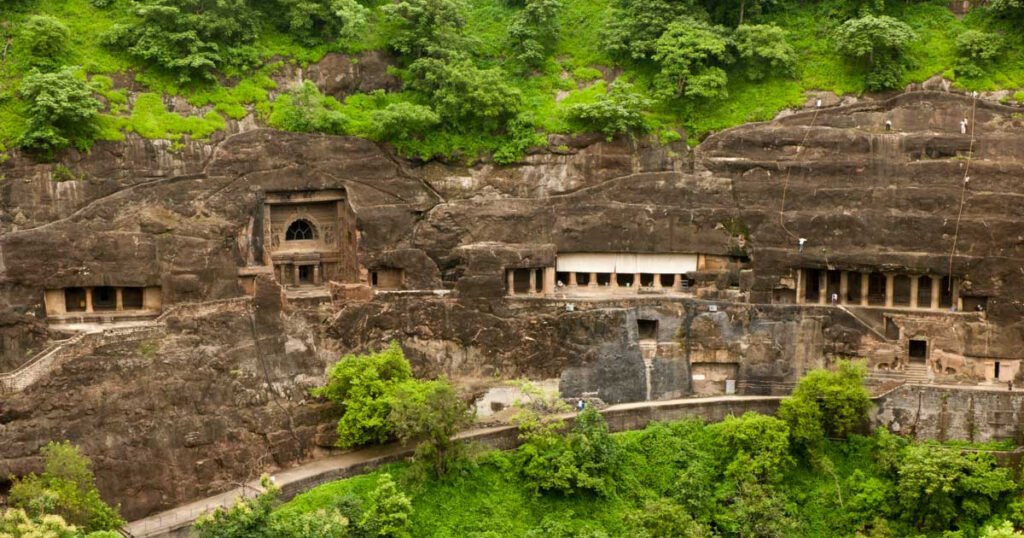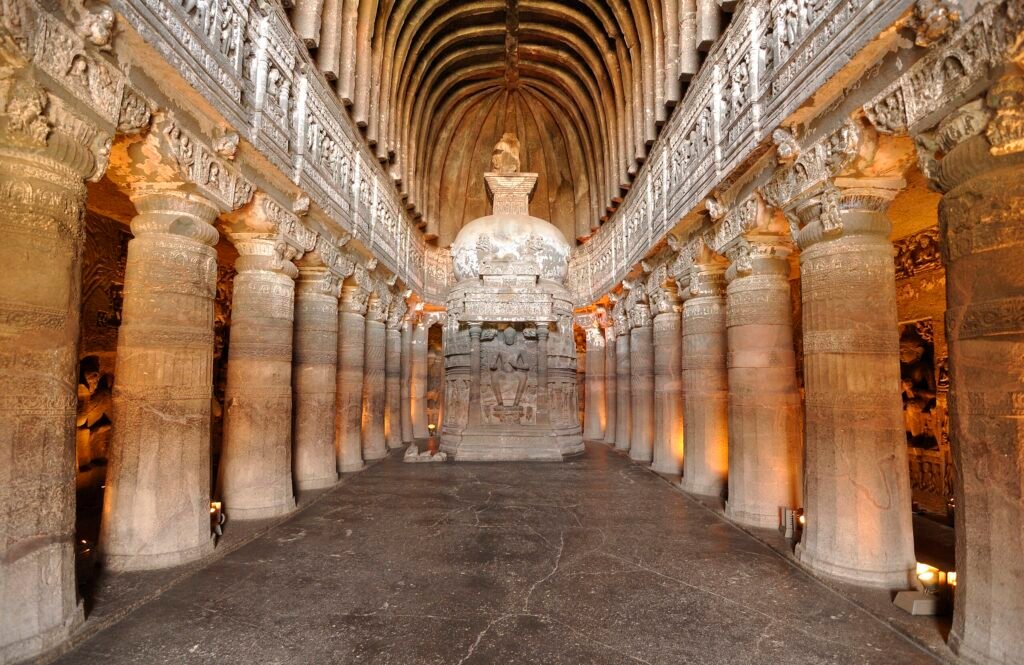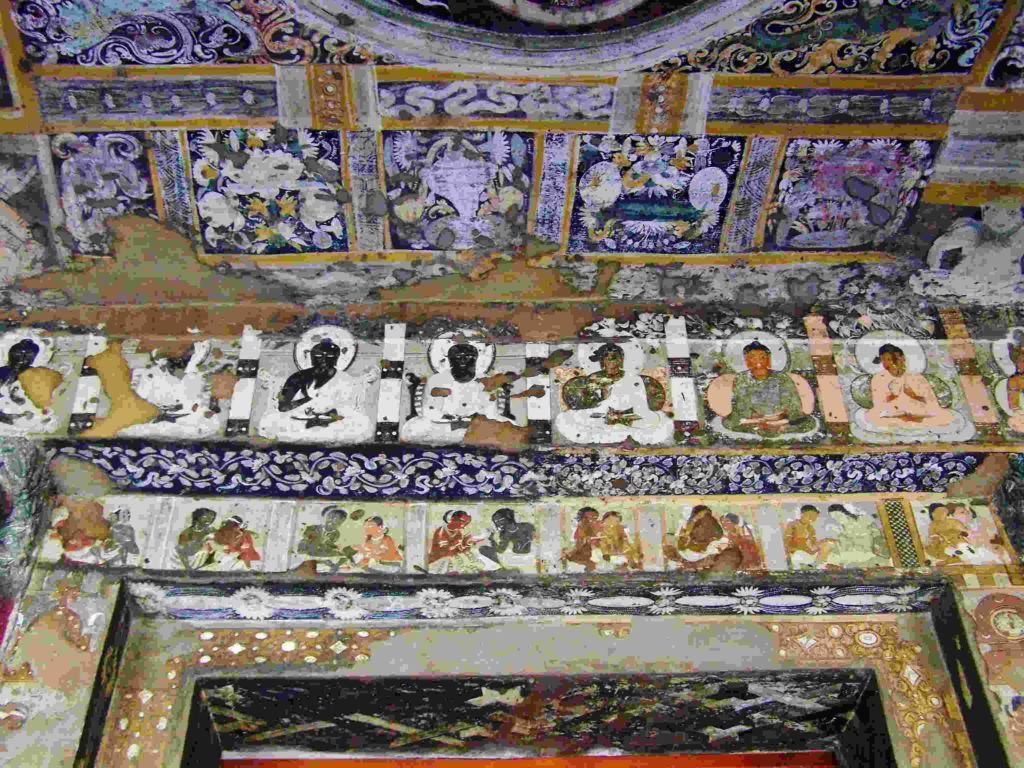Discover the Secrets of Ajanta Caves with Dhyanam India Tours
The Ajanta Caves in Maharashtra, India, are a spectacular example of ancient rock-cut architecture. They also showcase exquisite Buddhist art. Moreover, recognized as a UNESCO World Heritage Site, these caves attract history lovers, spiritual seekers, and art enthusiasts. In addition, their intricate murals and sculptures make a visit unforgettable.
If you are planning a trip to India, then visit the Ajanta Caves. They transport you back to a time when religion, art, and architecture existed in harmony. Moreover, exploring these caves lets you experience history, culture, and spirituality.
Where Are the Ajanta Caves Located?

Situated in Maharashtra, the Ajanta Caves are about 100 km from Aurangabad and 400 km from Mumbai. Moreover, a horseshoe-shaped gorge along the Waghora River surrounds them. As a result, lush greenery enhances the historical and scenic experience for visitors.
History of Ajanta Caves
The Ajanta Caves date back to the 2nd century BCE and extend to the 6th century CE. Moreover, historians identify two distinct phases in their creation:
- Early Phase (Hinayana Period – 2nd century BCE): Focused mainly on simple prayer halls (chaityas) and monastic dwellings (viharas).
- Later Phase (Mahayana Period – 5th to 6th century CE): Known for more elaborate carvings, sculptures, and paintings influenced by Mahayana Buddhism.
The Ajanta Caves consist of 30 rock-cut caves, each carved out of solid basalt rock. Every cave has its own unique design, purpose, and artistic treasure. Let’s explore some of the most remarkable caves:
In 1819, a British officer rediscovered the caves during a hunting expedition. Until then, dense forest had hidden them for centuries. As a result, the world once again gained access to this ancient treasure.
Architecture and Art of Ajanta
Buddha Cave (Cave 26)

Cave 26 in the Ajanta Caves, Maharashtra, is one of the most celebrated Buddhist chaitya halls in India. Believed to have been constructed in the 5th–6th century CE during the Vakataka dynasty, this cave reflects the artistic and spiritual brilliance of early Buddhist monastic communities. In addition, other notable Buddha caves, such as Cave 9, Cave 10, and Cave 19, also feature exquisite chaitya halls, stupas, and intricate carvings that highlight the devotion and skill of ancient Buddhist artisans.
Architectural Highlights
Buddha Cave (Cave 26) is a chaitya hall, meaning it is a prayer hall with a stupa at the center. Key features include:
- Rock-cut façade with intricate sculptures and pillars.
- Stupa at the center, symbolizing the presence of Buddha and serving as a focal point for meditation.
- Carved columns and arches with detailed ornamentation, floral motifs, and depictions of Buddhist legends.
- Mural remnants depicting Buddha’s life, teachings, and Jataka tales.
The cave’s architecture demonstrates a perfect balance of structural ingenuity and spiritual symbolism, creating a serene ambiance that draws visitors and pilgrims alike.
Significance of Cave 26
- Cave 26 is historically significant for being one of the largest and best-preserved chaitya halls in Ajanta.
- It reflects the Hinayana Buddhist tradition, emphasizing meditation and devotion to the stupa.
- The artwork and carvings serve as an important source for understanding ancient Indian sculpture and religious art.
Other Notable Caves

- Cave 1: Famous for its elaborate murals, including depictions of Prince Siddhartha’s life before he became Buddha.
- Cave 2: Houses some of the finest paintings in Ajanta, including serene depictions of Bodhisattvas and monks.
- Cave 17 & 19: Known for their smaller size but intricate sculptures and paintings depicting royal life, village scenes, and divine beings.
- Cave 10 & 11: Important for viharas (monastic living spaces) and smaller stupas, showing the daily life of Buddhist monks.
Why Visit the Ajanta Caves?
Visiting Ajanta Caves is not just about exploring history; it’s about experiencing India’s spiritual and artistic journey. Here’s what makes it special:
- Ancient Murals & Frescoes: Depict Buddha’s life and moral tales.
- Sculptural Masterpieces: Serene Buddhas and intricate carvings that are more than 2,000 years old..
- Architectural Marvels: Chaityas and Viharas show advanced rock-cut engineering.
- Peaceful Ambience: Set in a scenic gorge along the Waghora River.
- Photography Paradise: A perfect destination for history buffs, art lovers, photographers, and culture enthusiasts.
Plan Your Visit to Ajanta Caves with Dhyanam India Tours
Exploring the Ajanta Caves is easier and more enjoyable when you travel with Dhyanam India Tours. Our expert guides provide in-depth insights into the history, architecture, and stories behind each cave, including the Buddha Cave and other remarkable sites. We offer comfortable transport, well-planned itineraries, and personalized attention to ensure a hassle-free experience.
Whether you love history, enjoy photography, or seek spirituality, Dhyanam India Tours helps you enjoy your visit to this UNESCO World Heritage Site. Plan your tour today and experience Ajanta in a whole new way!
